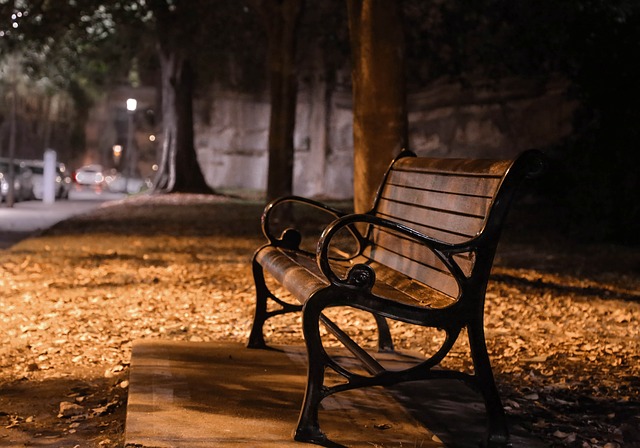Street furniture
Contents |
[edit] Introduction
The term ‘street furniture’ is the collective name used for all furniture, fittings and objects in the external areas of buildings, landscapes and streets. Its main purpose is functionality but it can also contribute to the aesthetics and identity of a building or space.
Street furniture can be categorised as:
- Public utilisation.
- Highways.
- Communication.
[edit] Public utilisation
This might include:
- Seating.
- Bollards and lamps.
- Bins.
- Trees and planters.
- Drinking fountains.
- Cycle accessories.
- Decorative features.
Public utilisation street furniture can be more than just a place to sit. A well-designed layout can create an attractive rest and waiting area. Street furniture can enable interaction between communities and encourage people to stay and experience an area. Cycle shelters and stands can encourage an active lifestyle. Bollards and lighting contribute towards safety. Street furniture can also be used to maintain order and tidiness and even to prevent certain behaviour. For more information see: Hostile architecture.
A local authority may have their own rules and styles for street furniture and this should be taken into consideration during the design phase of developments with external space. This might include a requirement for cycle shelters or benching and seating requirements in landscaped areas.
As well as serving a practical purpose, street furniture can create a sense of identity and contribute to a return of investment by creating a pleasant visitor experience. The correct specification and design of street furniture can also contribute to the sustainability of a building project. For example, BREEAM compliance can be factored into the design of a project and this will may affect the selection and design of street furniture.
[edit] Highways
Highways street furniture might include:
- Traffic signage and signals.
- Shelters.
- Street lighting.
- Bollards.
- Cycle accessories.
The Highways Act 1980 governs the requirement for street furniture in public roads, pathways and streets. Street furniture in these areas can serve practical and health and safety purposes. The design and installation of street furniture in these areas should comply with the highway authorities’ standards and requirements. Application to alter areas that fall within the boundary of the Highways Act, need to be made long in advance of the works taking place and this will have to be taken into consideration in the program.
[edit] Communication
Communications street furniture might include:
- Telephone boxes.
- Post boxes.
- Internet access devices and charging outlets.
- Broadband and phone cabinets.
- Mobile phone masts.
- Advertisement boards and screens.
The local authority in the area may specify and regulate the requirements for communication-related street furniture. For example, the requirement might be implemented in planning conditions for a new development.
The significance of communications street furniture can be seen in London, where red phone boxes have formed an iconic part of the identity of the city, even given the lack of a current requirement for public phones because of advances in mobile technology.
[edit] Construction and materials
There are numerous suppliers of street furniture in the UK that can offer a selection of pre-manufactured items. Designers might also specify bespoke furniture that can be constructed on site or outsourced for custom manufacturing.
There is a need in the current market for sustainable products and street furniture with more resilience and an extended life. This includes vandal-proof or vandal-resistant features. To contribute to sustainability, street furniture can be made from recycled plastic, or timber sourced from FSC certified forests.
[edit] Related articles on Designing Buildings Wiki
Featured articles and news
UK Infrastructure: A 10 Year Strategy. In brief with reactions
With the National Infrastructure and Service Transformation Authority (NISTA).
Ebenezer Howard: inventor of the garden city. Book review.
The Grenfell Tower fire, eight years on
A time to pause and reflect as Dubai tower block fire reported just before anniversary.
Airtightness Topic Guide BSRIA TG 27/2025
Explaining the basics of airtightness, what it is, why it's important, when it's required and how it's carried out.
Construction contract awards hit lowest point of 2025
Plummeting for second consecutive month, intensifying concerns for housing and infrastructure goals.
Understanding Mental Health in the Built Environment 2025
Examining the state of mental health in construction, shedding light on levels of stress, anxiety and depression.
The benefits of engaging with insulation manufacturers
When considering ground floor constructions.
Lighting Industry endorses Blueprint for Electrification
The Lighting Industry Association fully supports the ECA Blueprint as a timely, urgent call to action.
BSRIA Sentinel Clerk of Works Training Case Study
Strengthening expertise to enhance service delivery with integrated cutting-edge industry knowledge.
Impact report from the Supply Chain Sustainability School
Free sustainability skills, training and support delivered to thousands of UK companies to help cut carbon.
The Building Safety Forum at the Installershow 2025
With speakers confirmed for 24 June as part of Building Safety Week.
The UK’s largest air pollution campaign.
Future Homes Standard, now includes solar, but what else?
Will the new standard, due to in the Autumn, go far enough in terms of performance ?
BSRIA Briefing: Cleaner Air, Better tomorrow
A look back at issues relating to inside and outside air quality, discussed during the BSRIA briefing in 2023.
Restoring Abbotsford's hothouse
Bringing the writer Walter Scott's garden to life.
Reflections on the spending review with CIAT.
Retired firefighter cycles world to raise Grenfell funds
Leaving on 14 June 2025 Stephen will raise money for youth and schools through the Grenfell Foundation.
Key points for construction at a glance with industry reactions.
























